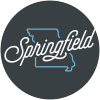Mayor Ken McClure and Springfield-Greene County Health Department Director Clay Goddard announced a new order lessening restrictions of business and community activities. The order is effective May 23-June 22, however, it will be reviewed prior to June 14, when it could change, if the city is ready to move into another phase.
The city’s Road to Recovery Plan document maps out the next few phases, based on data gathered throughout the phase.
- View Mayor McClure’s Phase 2 Road to Recovery order.
- View the PowerPoint presentation
The plan maps out the area’s next phases in reopening the local economy. The individual components and phases of the plan are subject to change based on local and national COVID-19 data as well as by measures tracked on the Springfield-Greene County Health Department’s COVID-19 Recovery Dashboard.
Phase 2 includes a 25% occupancy limitation for restaurants, bars, nightclubs, tap rooms, entertainment venues and museums based on square footage of the area. Be sure to read the plan for specific guidance for each facility.
The formula is: (Square footage) / 30 x 25% = Occupancy limit.
Swimming pools are limited to 25% of the bather load of the pool. Playgrounds, parks and trails are open.
Noncontact sports activities are allowed with a 25% occupancy limitation based on the square footage of fixed seating in the spectator area. Noncontact sports practices are allowed with no more than 25 people coordinated in stable, separate groups. Essential retail establishments and businesses considered nonessential can operate with 25% occupancy if their square footage is less than 10,000 square feet. Essential retail establishments and businesses considered nonessential can operate with 10% occupancy if their square footage is more than 10,000 square feet.
Personal care services can operate with a 25% occupancy limitation based on square footage. The occupancy limitation includes employees, and masks are required on the part of the patron and the service provider if the distance between them during the service is less than 6 feet.
Gyms and fitness centers can operate with a 25% occupancy limitation based on square footage. Fitness classes are allowed with 25% of the occupancy limitation based on the square footage of the room being used.
Day cares can open with limitations of stable groups of no more than 25. Day camps can open if the primary role is child care with limitations of stable groups of 25. Private schools remain closed.
In-person religious services, weddings and funerals are allowed to operate with 25% of the occupancy limitation based on the square footage of the individual rooms and the facility.
Regarding public gatherings, special events of more than 50 people on city property or streets requiring a permit are not allowed.
All residents should encourage senior citizens and vulnerable populations should stay at home. Working from home, if possible, is also encouraged. Physical distancing, increased cleaning and hand hygiene are also encouraged. Wearing masks is encouraged during travel and monitoring upon return from non high-risk travel. Quarantine is encouraged upon return from high-risk travel.
The city will be under Phase 2 through June 22, but that may be shortened if the Mayor decided to amend or replace that order to move to Phase 3. The goal of the phased recovery plan is to reopen the community as quickly and safely as possible, while monitoring the spread of disease and taking action to keep the spread of disease to an acceptable level.
The Road to Recovery Plan is a “living” document that serves as a framework for Mayor McClure’s future reopening orders. The plan allows community members and organizations to have a firmer understanding of what recovery looks like, when the spread of the disease is controlled and healthcare, public health and testing capabilities are strong.
Within this framework, community leaders will make decisions approximately every three weeks on whether the community is ready and prepared to take the step into the next phase or if it is prudent to remain in the current phase. Phases are fluid and based on dashboard indicators and state orders. To a large extent, the virus will dictate the timeline of recovery.
This dashboard covers five areas, including:
- detailed case information, including total and daily cases based on a person’s onset of symptoms and active, deceased and resolved cases.
- hospital capability, which is based on hospital staffing, supplies and space available to respond to COVID-19.
- public health capability, which is based on the capability to conduct epidemiological interviews and contact tracing, and risk pertaining to unmitigated community exposure for COVID-19.
- testing capability, which measures the estimated community testing capability for COVID-19. The index is based on the available testing and result turnaround time.
- regional data information, which measures the estimated public health capability and testing capability for surrounding counties.

















